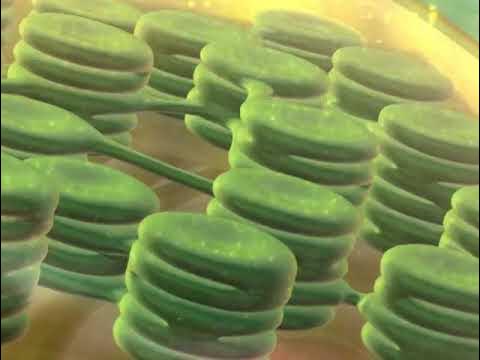Plant Cell vs Animal Cell | 3 Key Differences
Summary
TLDRIn this informative video from 2-Minute Classroom, the presenter explores the key differences between plant and animal cells. Both cell types share mitochondria and vacuoles, but plant cells uniquely possess chloroplasts for photosynthesis and a large central vacuole that provides stability and turgor. Additionally, while both cell types have cell membranes, only plant cells feature a rigid cell wall that maintains their shape. This concise explanation highlights the unique characteristics of plant cells that contribute to their functions, offering viewers a clear understanding of cellular biology.
Takeaways
- 🌱 Plant and animal cells share many similarities but have key differences.
- 🔋 Both plant and animal cells contain mitochondria, which produce energy.
- 🌞 Only plant cells have chloroplasts, the organelles responsible for photosynthesis.
- 🌍 Photosynthesis converts sunlight into energy, essential for life on Earth.
- 💧 Plant cells have vacuoles for storage, but only they possess a large central vacuole.
- 🏋️ The large central vacuole in plant cells provides stability and turgor pressure.
- 🛡️ Both cell types have a cell membrane, which regulates the inflow and outflow of molecules.
- 🧱 Only plant cells have a cell wall, which gives them shape and structure.
- 🚫 The cell wall does not regulate the movement of molecules, a function of the cell membrane.
- 👍 Understanding these differences is essential for studying cell biology.
Q & A
What is the primary function of chloroplasts in plant cells?
-Chloroplasts are responsible for photosynthesis, allowing plants to convert sunlight into energy.
Do animal cells perform photosynthesis?
-No, animal cells do not have chloroplasts and, therefore, do not perform photosynthesis.
What role do vacuoles play in both plant and animal cells?
-Vacuoles are used for storage in both plant and animal cells, holding various substances.
What is unique about the central vacuole found in plant cells?
-The central vacuole in plant cells is large and primarily contains water, providing stability and turgor pressure.
How do plant cells maintain their shape?
-Plant cells maintain their shape through the presence of a rigid cell wall, which provides structural support.
What is the function of the cell membrane in both plant and animal cells?
-The cell membrane regulates the inflow and outflow of molecules in both plant and animal cells.
Why is the cell wall important for plant cells?
-The cell wall is important for giving plant cells their shape and structure, enabling them to stand upright.
Are mitochondria present in both plant and animal cells?
-Yes, both plant and animal cells contain mitochondria, which are responsible for energy production.
What is the significance of photosynthesis for life on Earth?
-Photosynthesis is significant because it is the primary source of energy for most life on the planet, converting solar energy into chemical energy.
What happens to plant cells without a central vacuole?
-Without a central vacuole, plant cells would lack turgor pressure, which could lead to wilting and a loss of structural integrity.
Outlines

Cette section est réservée aux utilisateurs payants. Améliorez votre compte pour accéder à cette section.
Améliorer maintenantMindmap

Cette section est réservée aux utilisateurs payants. Améliorez votre compte pour accéder à cette section.
Améliorer maintenantKeywords

Cette section est réservée aux utilisateurs payants. Améliorez votre compte pour accéder à cette section.
Améliorer maintenantHighlights

Cette section est réservée aux utilisateurs payants. Améliorez votre compte pour accéder à cette section.
Améliorer maintenantTranscripts

Cette section est réservée aux utilisateurs payants. Améliorez votre compte pour accéder à cette section.
Améliorer maintenant5.0 / 5 (0 votes)






